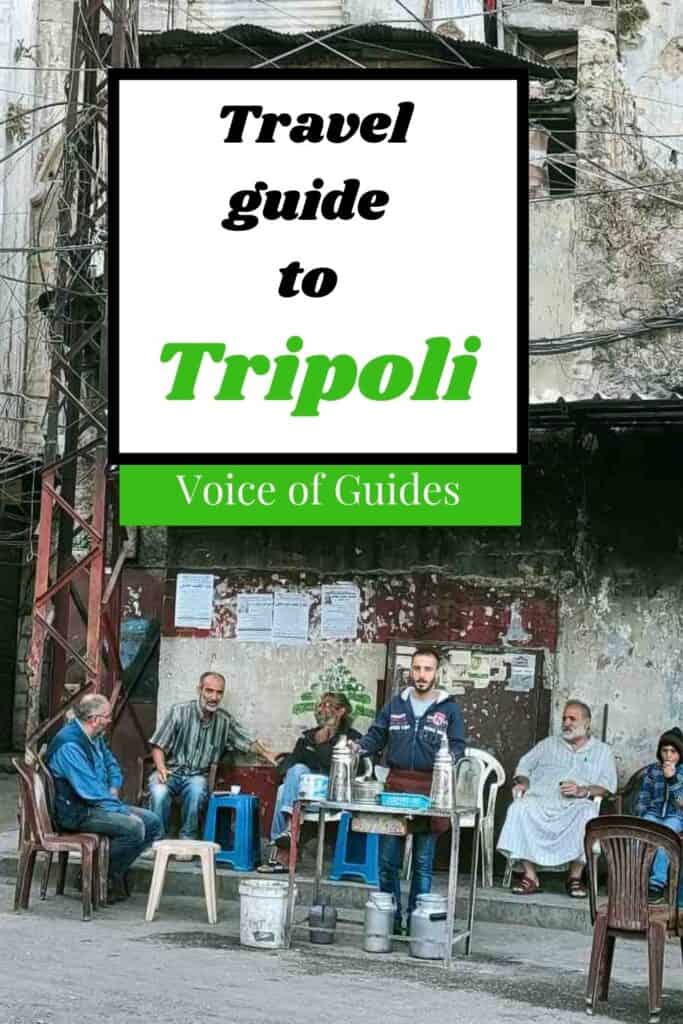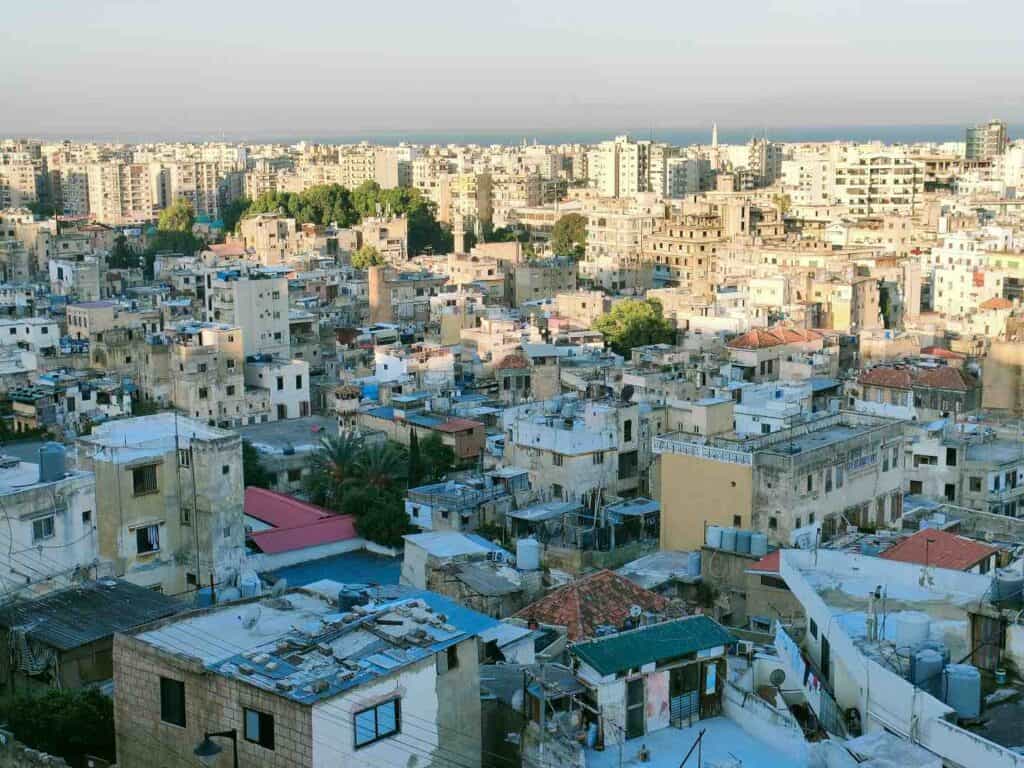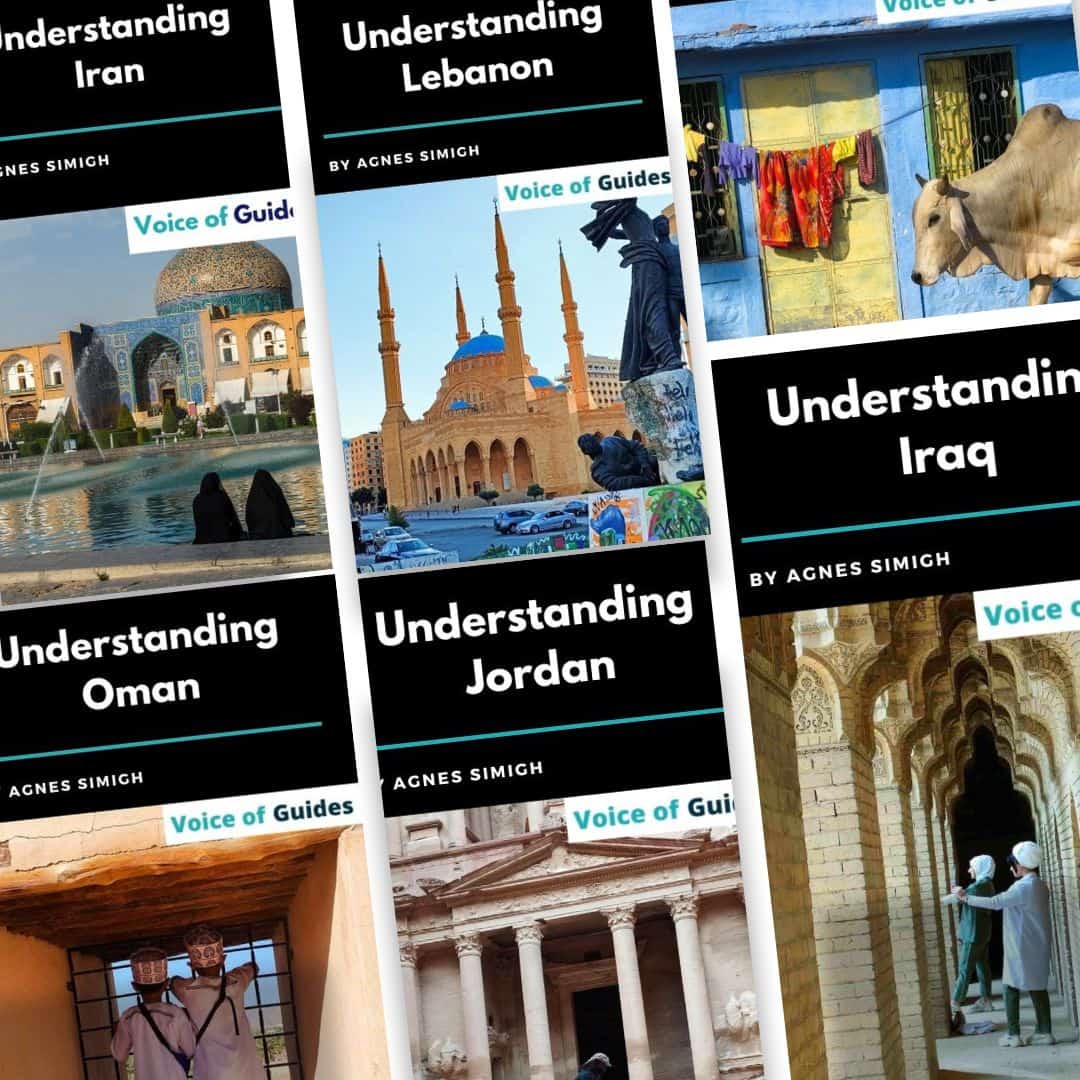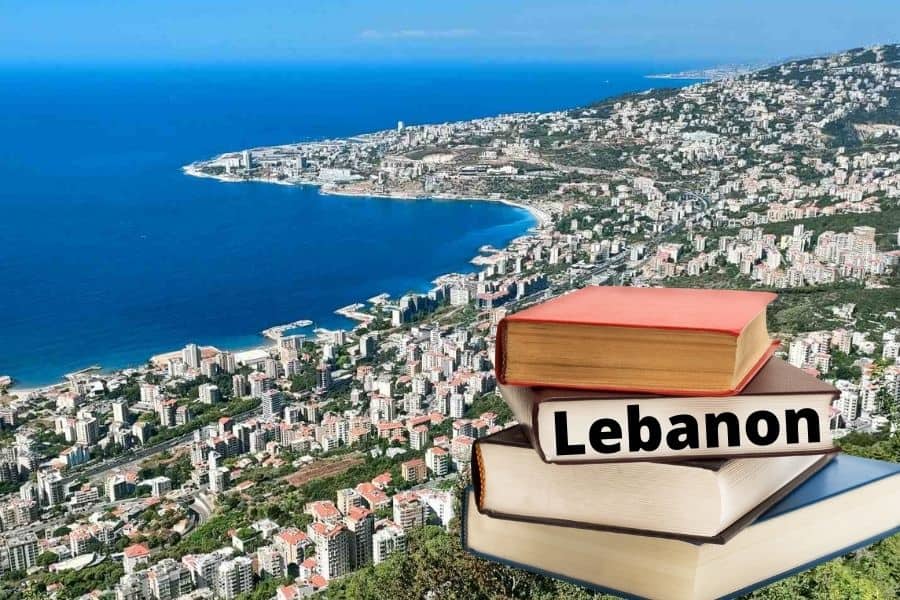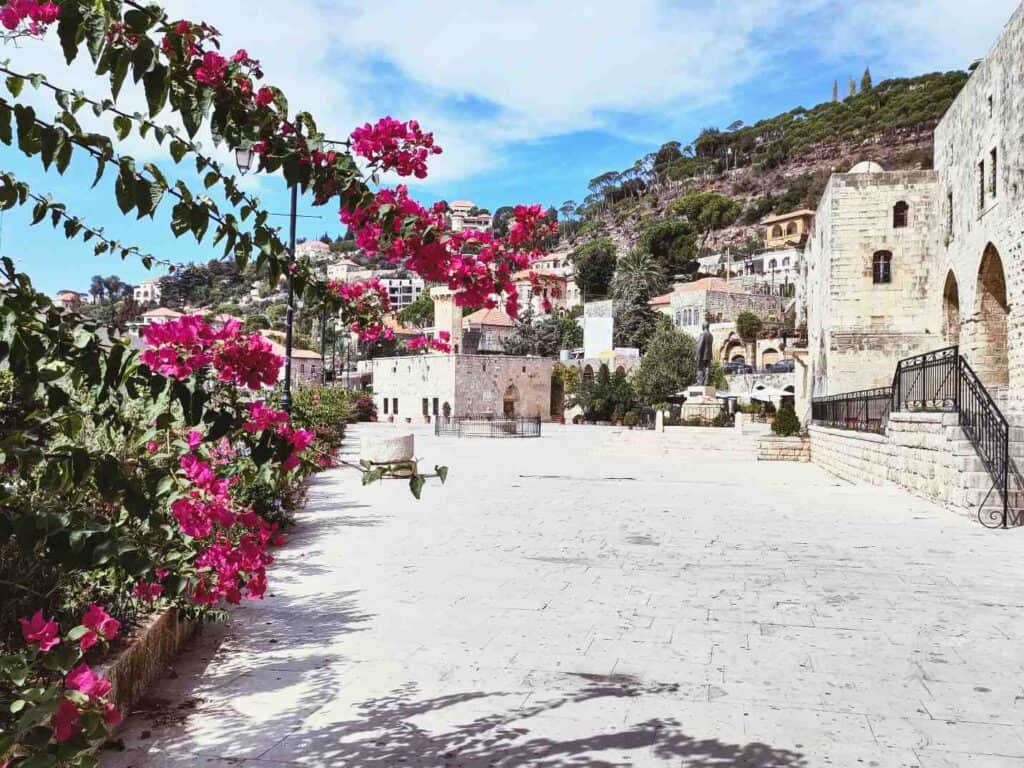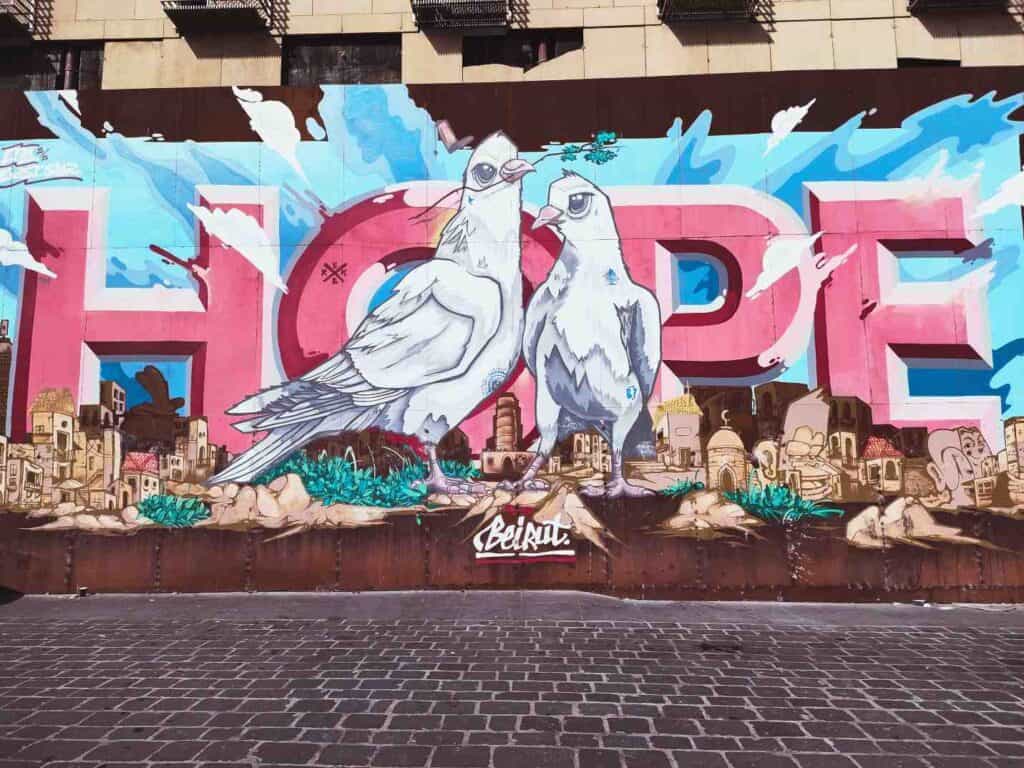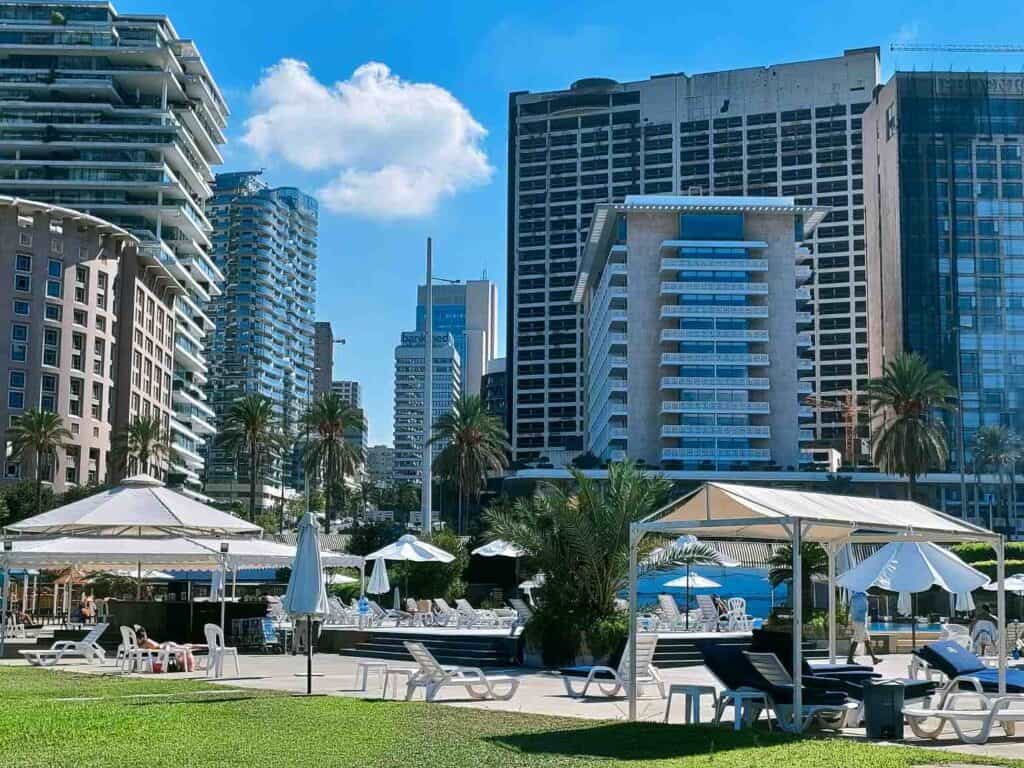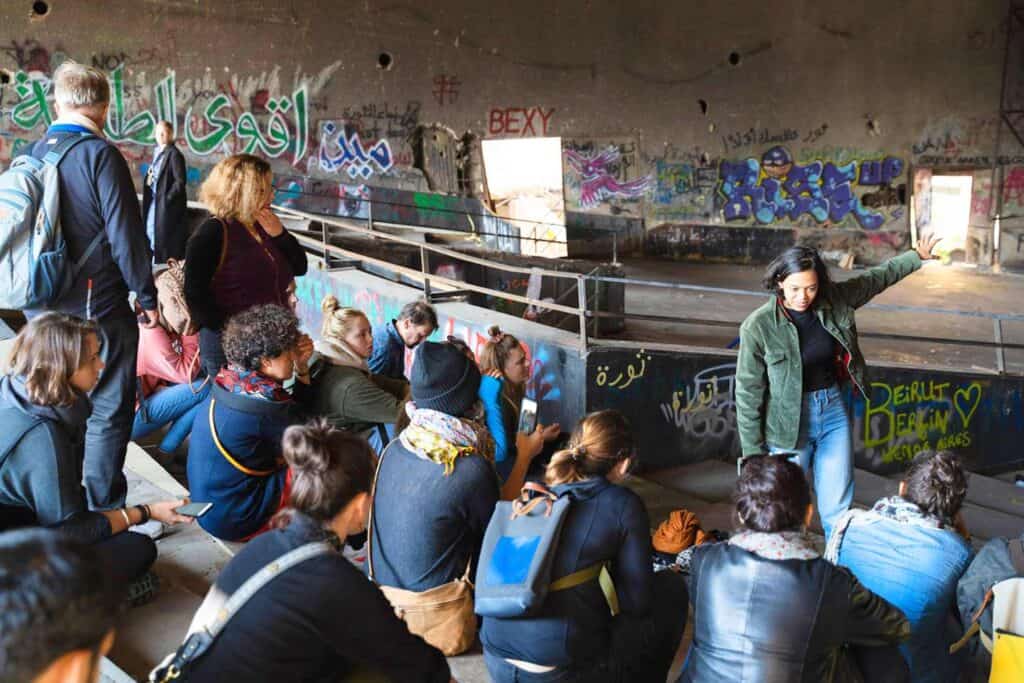This article may contain affiliate / compensated links. For full information, please see our disclaimer here.
The second-largest city of Lebanon lies along the coast and serves as the major port in the north and the place you should visit in north Lebanon. Tripoli is a conservative Muslim Sunnite city overshadowed by the cosmopolitan and liberal Beirut. The rivalry between Tripoli and Beirut goes back to much earlier times, and the northern town often complains about being overlooked. Here you find all the information about the best places to visit in Tripoli, including restaurants, transport, and local tours.
Tripoli was a surprise for me, and after spending two nights in the city, I returned at a later stage of my trip again. It may not be as clean and organized as Beirut, but Tripoli’s ancient, often shabby houses and alleys radiate history, and it has a soul. People are as kind as in other parts of Lebanon, and a foreigner is also more than welcome.
Being a more conservative religious city means that, unlike in Beirut, most women dress up modestly, wear a scarf or a chador. As a tourist, cover your legs and shoulders but make no worries about a scarf or a chador. Many locals also do not wear that.
Tripoli has a reputation for being less safe for the clashes in 2007 when the Lebanese army confronted Palestinian militias linked to Al Qaeda in the Nahr al-Bared refugee camp. The battles lasted for months when finally the Lebanese army took control of the place in September. This event damaged Tripoli’s reputation, has been associated with terrorism and most tourists omitted it from their itinerary.
Tripoli was one of the most pleasant parts of my trip, and I felt absolutely safe even walking in the dark in October 2021. Of course, as anywhere in Lebanon, the atmosphere is tense because of the economic crisis and the activities of Hezbollah, and you should always stay up-to-date about the current situation.
Tripoli’s military presence is visibly higher, with soldiers stationed at every corner in the old town.
The citadel, the hammams, and mosques of medieval Mamluk architecture with the second-highest concentration after Cairo are the highlights of a visit to Tripoli. The Crusaders built the massive citadel when they annexed Tripoli. Later, the Mamluk sultan, Qalawun, massacred most of the population and razed the port to the ground in 1289. Qalawun built the city around the citadel with a maze of souqs, mosques, madrassas (Islamic religious schools), and khans (resting place for the merchants). These are the architectural gems of Tripoli.
The city has two distinct parts worth visiting: the old town with a labyrinth of valleys and the Mina port.
The two are connected through boulevards with cafes, restaurants, and shops. You can complete all that on foot; however, time passes, and you need minimum half, but rather one full day in Tripoli.
Please note: most attractions (hammams, mosques, khans) are closed; however, if you ask around, they may open it for you.
The best places to visit and things to do in Tripoli
Stroll around the old city
It is the most historic part of Tripoli, with plenty of mosques, hammams, madrasas from the 14-15th century hidden between the labyrinth of alleys of the souk that sometimes makes it difficult to spot them. Tripoli is a great place for shopping too. The series of shiny jewelry shops reflect the local Arabic taste and the entire bazaar absorbs the smells of Arabic perfume. The souk is a place you must visit in Tripoli.
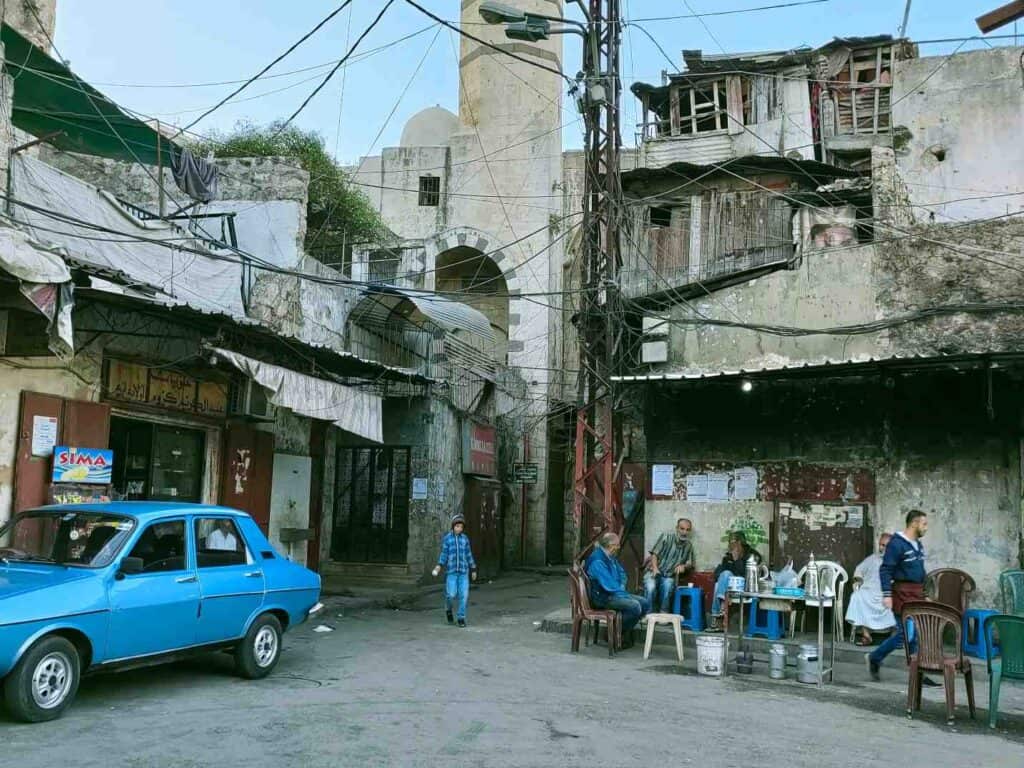
Early morning you can see groups of men gather and smoke Nargila in the bar before starting their days. At this time, only a few street sellers are open and sell the tasty bread. The bazaar awakes later but then gets busy with local customers.
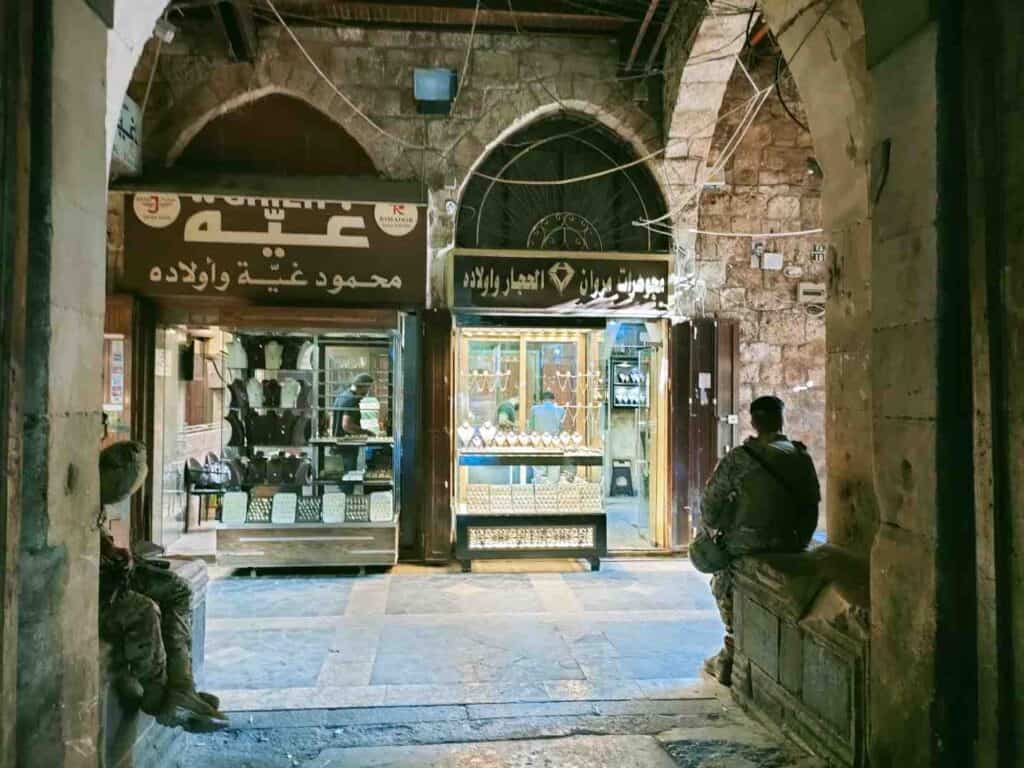
Citadel of Raymond de Saint-Giles
The massive grey citadel watches over the old city of Tripoli. It opens at 8 am, but I went there early morning, and the lady at the entrance let me in without buying the ticket as the museum part was closed. It was amazing to observe the first sun rays dropping on the walls from a higher point and looking down on the messy complex of buildings at sunrise.
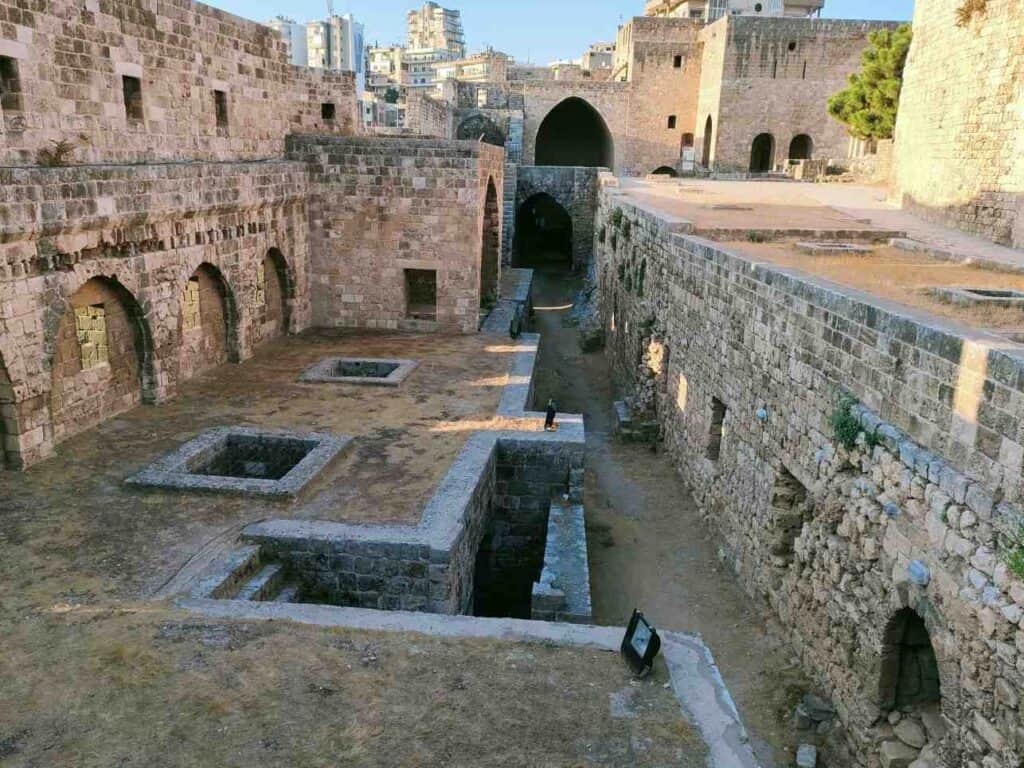
It bears the name of the Crusaders’ leader who decided to build a fortress on “Mount Pilgrim”. The fort is nothing but a massive military structure rebuilt countless times, and apart from the attractive gate that dates back to the Ottoman period, there is not much to admire there. However, for the view, it is still a place worth a visit in Tripoli.
Crossing the main road at the feet of the citadel, you can take the steps directly to the old city.
Madrasas (Islamic religious schools)
Look for the madrasa al-Khariah Hassan, al-Mashhad, al-Nouriyat, al-Qartawiyya, al-Shasiyat, and al-Tuwashiyat in the old town near to each other around the Mansouri Great Mosque.
Hammams
The hammams were always strategically placed, close to the Great Mosque and the commercial center.
Hammam al Nouri is the remains of the big public bath from the 14th century.
Hammam al-Abd is Tripoli’s only functioning bathhouse reserved for only men with stunning mosaics and a glass dome ceiling.
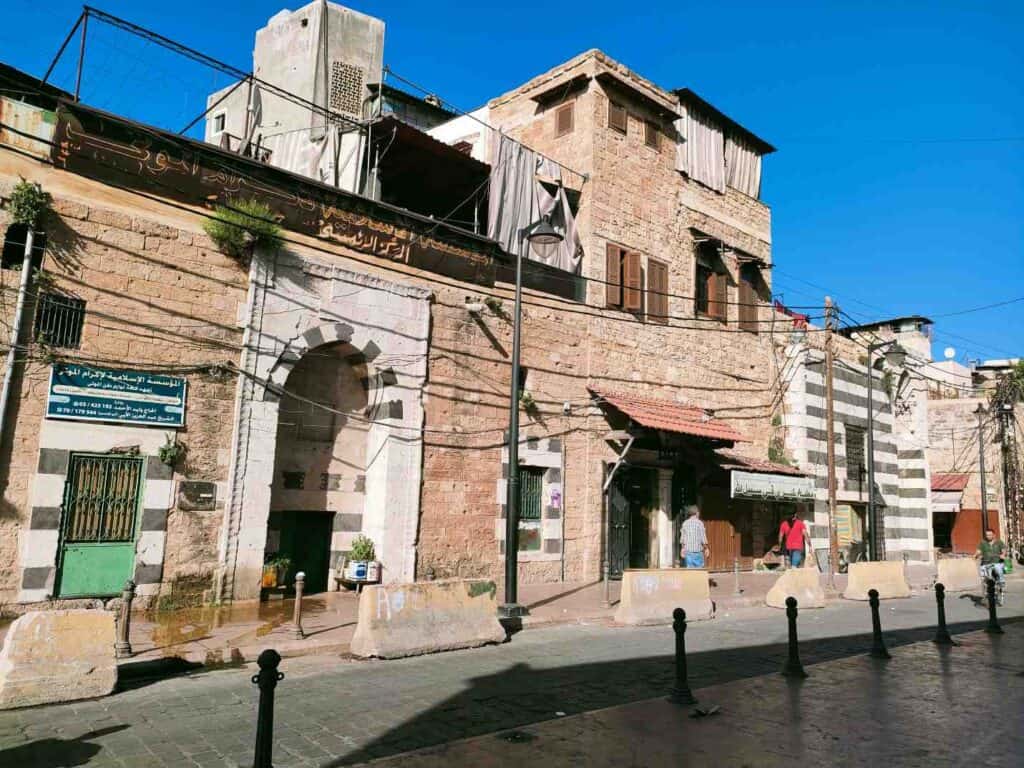
Hammam al-Jadid is the latest built during the Ottoman period in the 1740s and was used till the 1970s. It is still the best-preserved hammam in the city.
Visit the Ezzeddine Hammam, which looks plain from the outside but gives you a perfect feeling of the public bath with the magnificent ceiling and painted walls. It is said to follow the Syrian layout of spas.
The Great Mosque (Mansouri Mosque)
It is an architectural gem of the old city built by the Mamluks on the ruins of the Crusader cathedral at the end of the 13th century. You need to dress up modestly. Women have to cover their wrists, ankle, and their head with a scarf. This is undoubtedly one of the best places to visit in Tripoli.
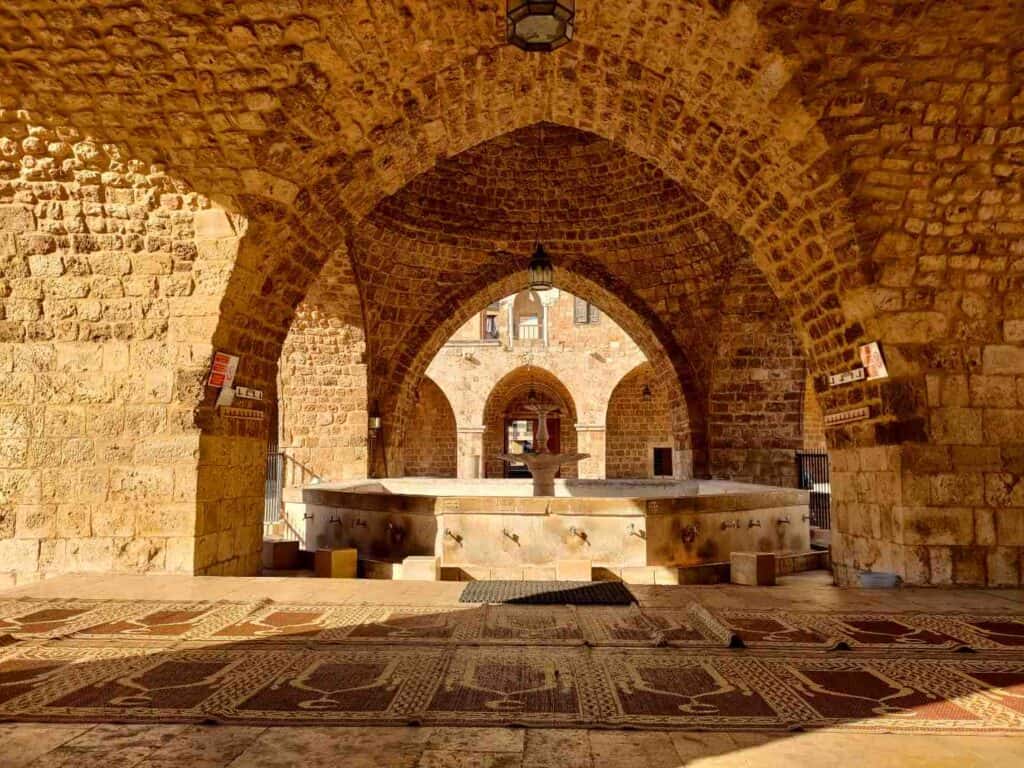
The khans
Khan al Saboun is in the heart of the souk, where the traders traditionally sold their olive-based products, primarily soap. Soap was once primordial in Tripoli’s economy being a precious product in Europe in the 18th century. The handmade soaps declined with the mass production of their cheap versions. However, the traditional soap-making technique has recently been revived, and you can find the best quality soaps and beauty products in the Khan al-Saboun. Apart from that, there are two other khans: khan al-Khayyatin (originally a Crusader hospital) and Khan al-Askar.
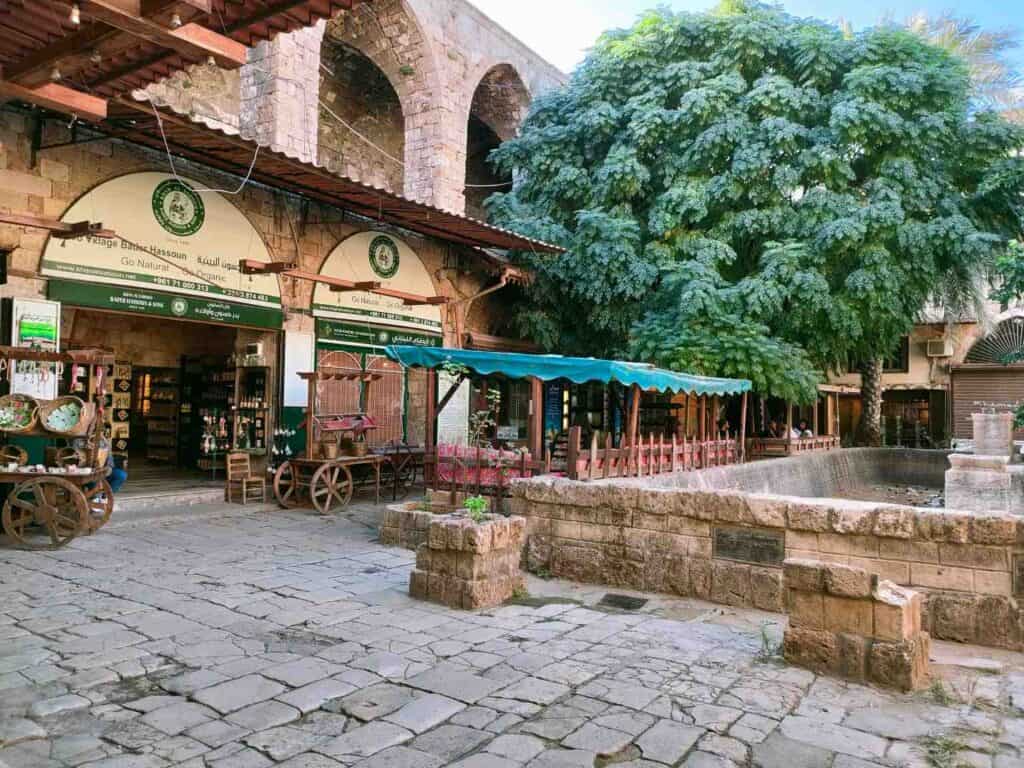
Taynal mosque
The Taynal mosque strikes the eye with its green painted dome outside the souk area next to a Muslim cemetery.
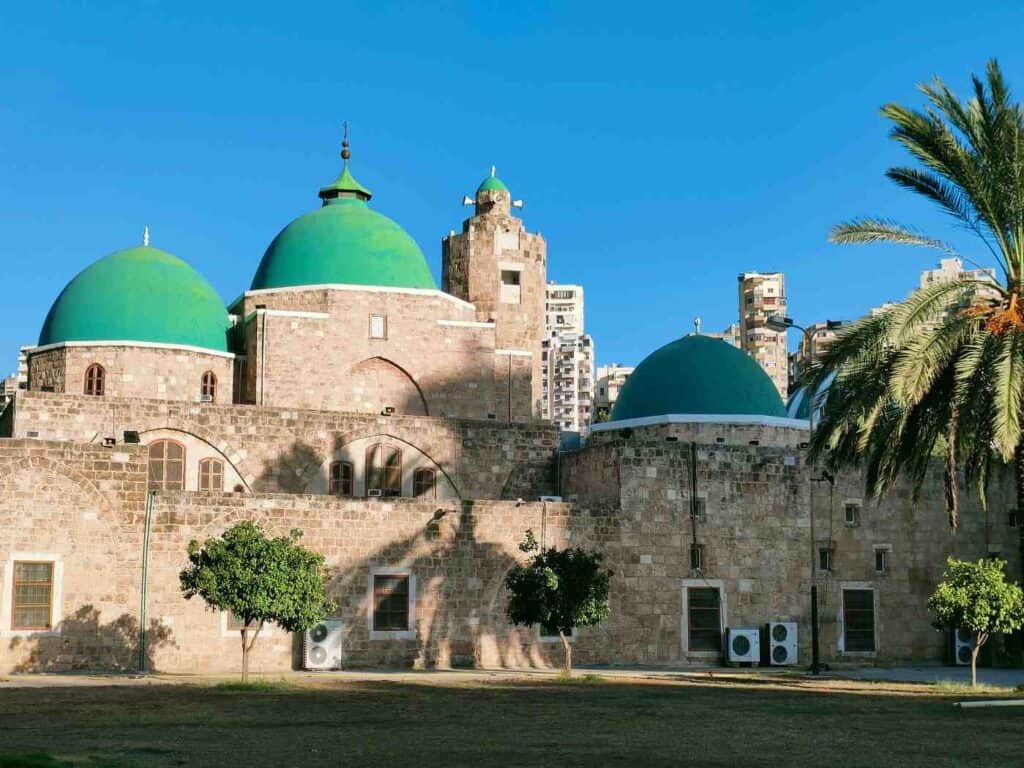
Al Mina (the port area)
Al Mina is the ancient city of Tripolis from the Phoenician era. The rest of what you see now in Tripoli is an extension of the port city on the peninsula.
The harbor has some pedestrian streets and a corniche that is far less attractive than that of Beirut. Still, this is one of the principal places for locals to hang around. Men get together again on the terraces in the evening to finish the day smoking Nargila or play cards. There are several attractions for children while people grab some fast food from one stall along the Corniche. The boats anchored in the port that take visitors during the day to the small islands offshore.
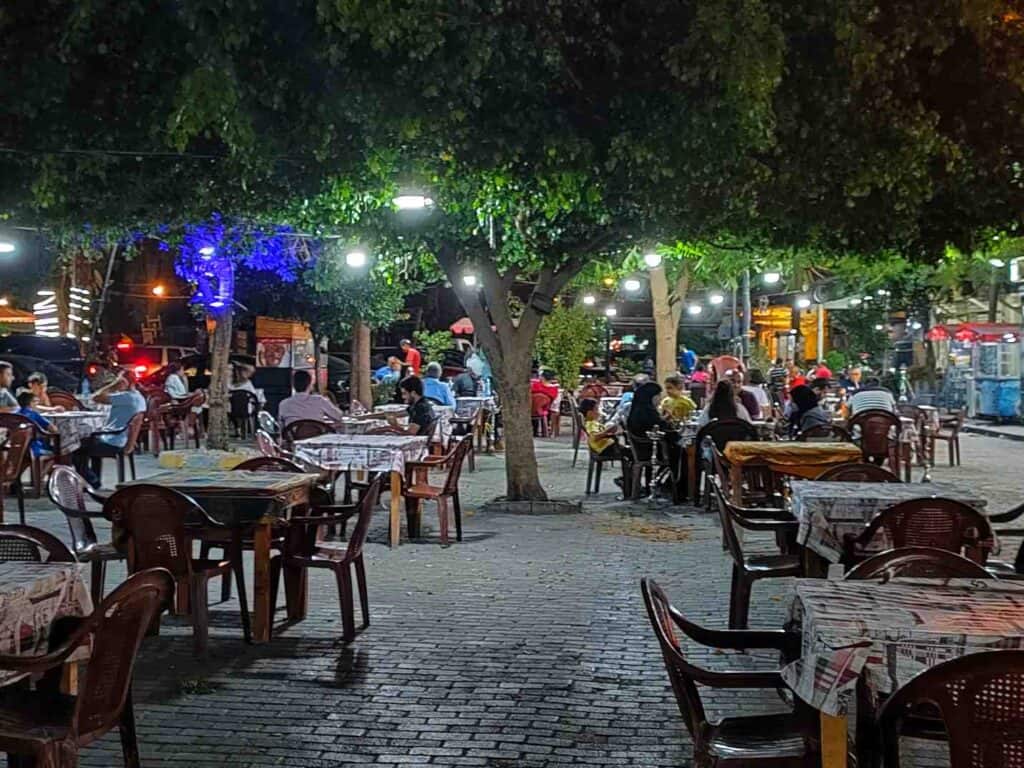
Rachid Karami International Fair Center
Oscar Niemeyer, the world-famous architect, well-known for his works in Brasilia, designed this modern architectural complex. The concrete geometric forms are only impressive for those interested in contemporary architecture; otherwise, it is a vast park with only one entrance and the same used to exit. If you are not into that, you may feel it a waste of time walking so much for a weird construction (that is how I felt at least). As a big public park, ex-pats and wealthy Lebanese come to stroll around and jog in the green oasis enclosed by walls.
The old train station
Heading to Al-Mina, check out the remains of the old train station hiding behind the fence and reed, a sad reminder of the prosperous past. Lebanon has no train anymore. However, once a rail connected Beirut, Tripoli, and Damascus and trade was flourishing. This was the second train station after the one in Beirut. It was opened in 1911 and served as the terminus of the Orient express that connected Beirut with Homs in Syria. With the outbreak of the civil war in 1975, it became abandoned and severely damaged. Many locals still visit the rusted carriages that do not let anybody forget the costs of the war.
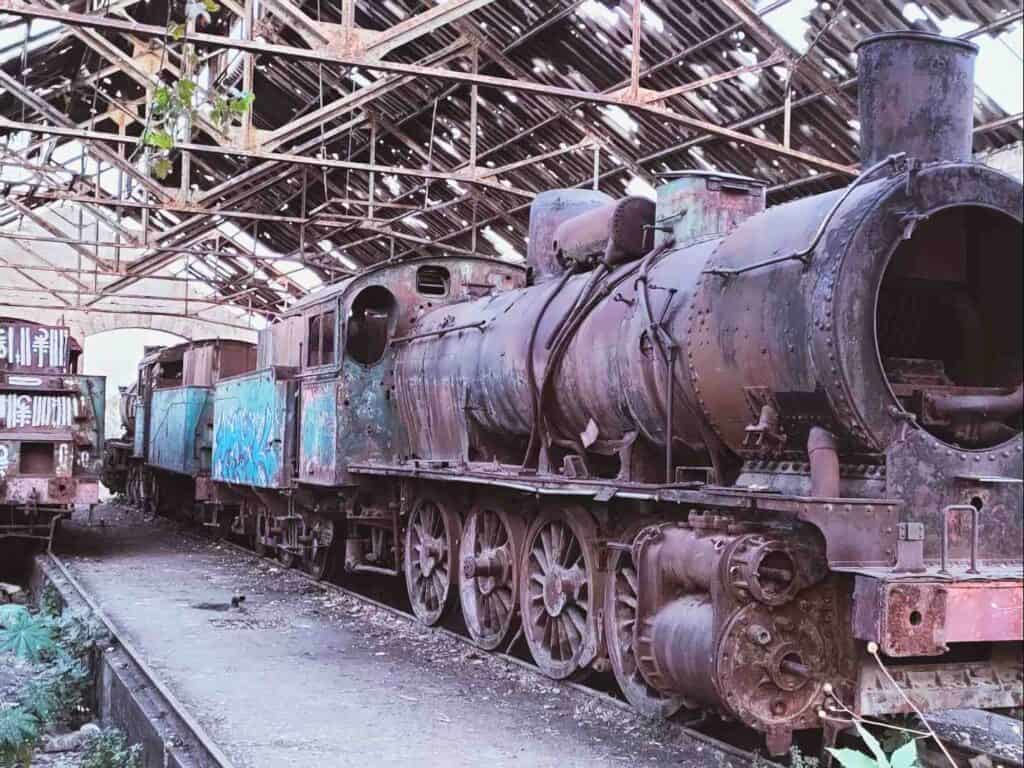
Boat trip to the Palm Islands Nature Reserve (July-September)
The Palm Islands Reserve comprises three flat islands located 5.5 km offshore. It was listed as a UNESCO site in 1992 as the habitat of endangered green turtles, rare monk seals, and nesting grounds for 300 types of migratory birds.
The Palm Island (Nakheel) is the most famous of the three Palm Island. Funnily, it is also called the Rabbit island as, during the French mandate, they raised countless rabbits here.
The tragic oil spill in 2006, which extended along almost the entire Lebanese coast till the Syrian border, also affected the islands’ ecosystem. All that happened during the war between Israel and Hezbollah when Israel bombed the Jiyyeh power plant. The oil spill endangered both turtles and migratory birds.
Since I was in Lebanon in October, I could not visit the islands. However, you find the necessary information about hiring a boat, dressing, timings, and price on the Jetsetterdiaries blog.
Local tours in Tripoli
It is nice to stroll around the old town and the Mina, but as I mentioned before, most architectural gems are hard to find and identify in the maze of alleys. You need extra information to get a full grasp of Tripoli. So, I highly recommend that you go on a local tour.
1. Take a day trip from Beirut to Tripoli
There are several local tours in Tripoli, but this one is the most extensive. It includes the Citadel Saint Gilles, the Al Mansouri Mosque, Taynal Mosque, Souk Al-Harajb, Khan Al-Khayyatin, the famous soap factory, Al-Abd Hammam, Hammam al-Jadid, Ezzeddine Hammam, and the Rachid Karami International Fair. You even stop in the famous Lebanese sweet shop, the Hallab 1881, and visit the Mina part.
2. Contact Tripoli’s number one tour guide
Mira is well-known in Tripoli for organizing different half-day tours. When I was there (October 2021), her group walking tours were still on hold. You find her email and WhatsApp number on her Facebook page. Contact her for guided tours in Tripoli.
3. Take a day trip to the Qadisha valley
Tripoli is a great starting point to make a day trip to the Qadisha valley, one of the most beautiful places in Lebanon. Visit the famous poet’s, Gibran’s museum in Bcharre, the Cedar forest, and Deir Mar Elisha monastery. If you join a group, you can book this tour starting from Beirut.
Or spend the whole day hiking along the Qadisha valley visiting more monasteries.
Where to eat in Tripoli?
Tripoli is a great place for trying the local cuisine and sweets, and there are some fantastic eateries that you must try, but even grabbing something from pushcarts and street vendors can be extremely delicious.
Akra restaurant: It is a traditional restaurant with great ambiance and the best place to try the Lebanese breakfast, Fatteh. It is a mix of cooked chickpeas, yogurt, and fried nuts accompanied by a plate of vegetables. It is so heavy that it is impossible to finish and keeps you going for the rest of the day.
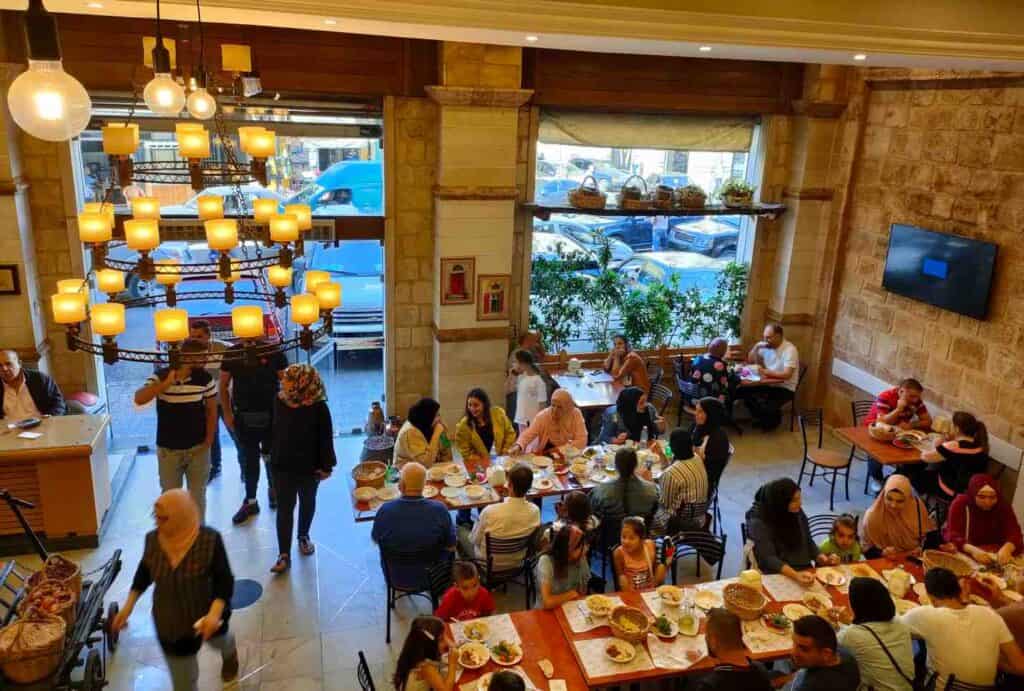
Abou Sobhi Shawarma: the small place with gigantic kebab meat turning around is always packed with locals. You can eat your delicious shawarma at the table in front.
Hallab 1881: close to Abou Sobhi, the traditional sweet shop sells knafeh, baklawa, and many other Arab sweets that look like a piece of art. It is also worth just having a look.
Al Nakhil restaurant: seafood restaurant in Al-Mina at the Corniche.
Where to sleep in Tripoli?
The only low-budget option in Tripoli is the Seed hostel next to the souk and close to the bazaar. Nazi, the manager, is extremely helpful and provides you with all the information about Tripoli’s best places to visit and where to eat, most of which I included in this guide, and I was happy with his suggestions. He speaks perfect English, which is less common in Tripoli. Rooms cost 20 USD/night with a shared bathroom. It is the best option if you are on a lower budget in Tripoli.
Beit el Nassim: a mid-range guesthouse in Al-Mina with a unique atmosphere and rooms, each having different names and decoration, is local’s favorite and a top choice to stay at in Tripoli.
How to go to Tripoli?
Tripoli in the north of Lebanon is easily reachable with public transport from Beirut (Cola station). You arrive in Tripoli at the big roundabout (Sahet et-Tall) with Allah written in Arabic. As usual, it is not an official bus station as you may expect but an open-air transport hub where all buses arrive and depart.
Do not refrain from visiting Tripoli just because it has a reputation of being more conservative and far less speak English than in Beirut. People dress more conservatively, but you experience the same kindness. It carries the stigma of an unsafe place in Lebanon since 2007 that the residents struggle to get rid of. It has architectural gems from the Mamluk period like no other cities in Lebanon and some excellent food specialties.
Tripoli is a must-see place in North Lebanon and a great starting point for a day trip to the Qadisha valley.
Pin it for later!
